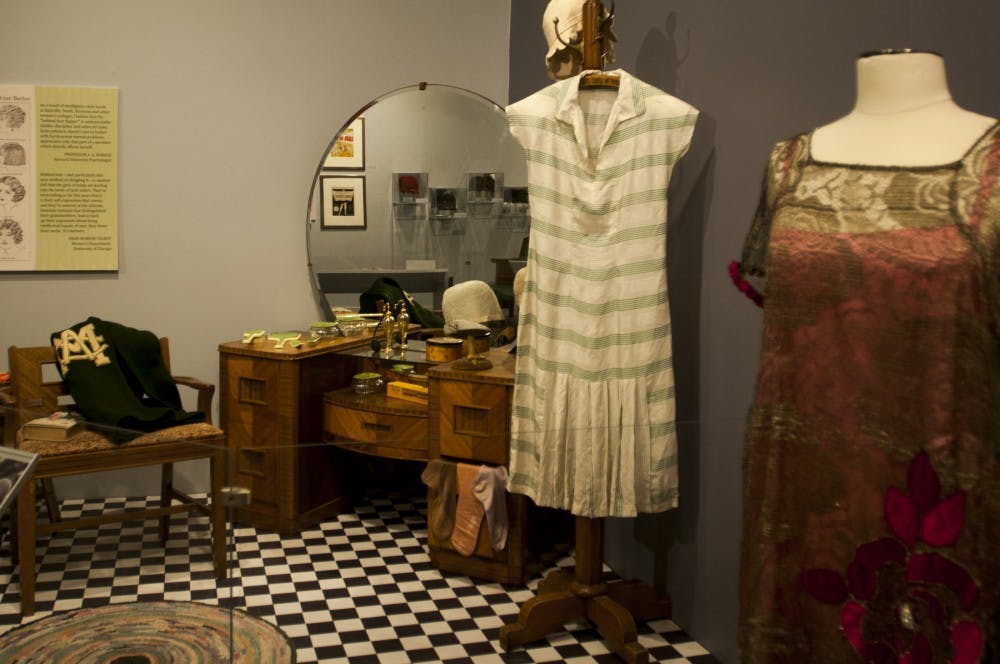The MSU Museum is currently presenting “Up Cloche: Fashion, Feminism, Modernity,” an exhibit that highlights American women of the 1920s and ‘30s growing into modernity.

The MSU Museum is currently presenting “Up Cloche: Fashion, Feminism, Modernity,” an exhibit that highlights American women of the 1920s and ‘30s growing into modernity.
The exhibit title refers to the cloche, a bell-shaped hat worn by women of this era. “The cloche represented the liberated woman, and the exhibition presents six ways in which the cloche symbolized this cultural shift for women,” said exhibit curator Shirley Wajda
“My co-curators Lynne Swanson and Mary Worrall and I wanted to understand why this hat, now so iconic, was worn by women of all ages and races and ethnicities and classes in the 1920s,” Wajda said via email.
The exhibit is focused on “The young American “flapper” (who) wore her newly won freedom to vote, earn and learn on her body: short dresses and clear stockings, bobbed hair and a head-hugging cloche,” according to the MSU Museum website.
The hat symbolized a change in American society, Wajda said.
“What we see in the long popularity of the cloche is the expansion, after World War I, of women’s power in many areas, from winning the vote in the United States to attending college in great numbers and to working in more sectors of the economy,” Wajda said.
The exhibit features a portion of MSU Museum’s vast hat collection, which happens to feature a large amount of cloches, Wajda said.
In addition to that, a film clip runs in the exhibit that features Clara Bow, a film star who “inspired the bad girl image and flapper fashion,” art professor Laura Smith said via email.
Relating to the exhibit, on Sept. 12 Smith is giving a talk entitled “Beaded Buckskins and Bad-Girl Bobs: Kiowa Female Modernity, Industry, and Activism in Horace Poolaw’s Portraits.”
“My talk builds on the ‘Up Cloche’ exhibit theme of modernity, feminism and fashion by adding American Indian women’s voices to the 1920s and ‘30s American experience,” Smith said.
Poolaw is an important historical source, Smith said.
“Horace Poolaw (Kiowa) photographed quite a few women from his community in this period,” Smith said. “His photos provide us with documentation of American Indian/Kiowa female experience in this period.”
It’s important for students to come see the talk in addition to the exhibit, Smith said.
“(Students should) consider the reasons why gender and racial exclusion continues to haunt this country,” Smith said. “It is also a timely exhibit considering its recognition of suffragettes, the attainment of women’s right to vote and the possibility of seeing now the first woman president.”
Wajda said the exhibit will give students historical insight.
“It offers new ways of exploring material culture ... as evidence to understand individual identities, social roles and cultural change,” Wajda said.
Support student media! Please consider donating to The State News and help fund the future of journalism.